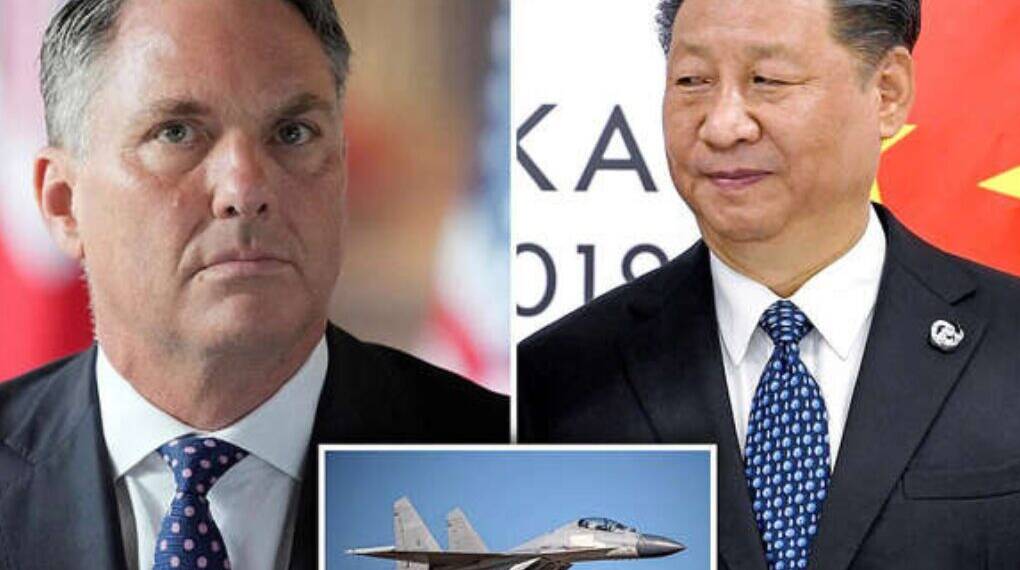Australia has sharply condemned China after one of Beijing’s military fighter jets carried out what Canberra described as an “unsafe and unprofessional” manoeuvre against a Royal Australian Air Force (RAAF) aircraft in international airspace.
The incident, which occurred over the disputed South China Sea, has reignited tensions between the two Indo-Pacific powers and underscored the growing risks of confrontation in one of the world’s most hotly contested regions.
According to reports, the confrontation took place during a routine surveillance mission conducted by an Australian P-8A Poseidon maritime patrol aircraft. The aircraft was operating within international airspace — a key distinction stressed by Australian authorities — when it was intercepted by a Chinese J-10 fighter jet.
The Chinese pilot allegedly flew dangerously close to the Australian aircraft, executing aggressive manoeuvres that Defence Minister Richard Marles said “posed a serious threat to the safety of our personnel.”
Australia’s Strong Reaction
Defence Minister Marles addressed the media soon after the incident, denouncing China’s “deeply concerning and unsafe behaviour.” He confirmed that Australia had raised the matter with Beijing through diplomatic channels and expressed grave concerns about the increasing frequency of such actions.
“Australia expects all nations, including China, to operate their military aircraft in a safe and professional manner,” Marles stated. “The Australian Defence Force was conducting lawful operations in international airspace, and such reckless manoeuvres have no place in a rules-based international order.”
This is not the first time Australian aircraft have been harassed by Chinese jets. In May 2022, a similar incident occurred when a Chinese fighter released flares and chaff — metallic strips used to confuse radar — dangerously close to another RAAF P-8, forcing its crew to take evasive action. At the time, Canberra lodged a formal protest with Beijing, warning that such behaviour risked a mid-air collision.
China’s Response and Denial
Beijing, however, has routinely rejected Australia’s accusations, maintaining that Chinese pilots are defending their country’s sovereignty. The Chinese Ministry of National Defense claimed that the Australian aircraft was conducting “provocative reconnaissance” near China’s territory and that its actions had “endangered Chinese air security.”
Chinese state media, including the Global Times, accused Australia of “hypocrisy” and of acting as a proxy for the United States in monitoring Chinese military activities. Analysts in Beijing argue that Australia’s growing alignment with Washington, especially through security arrangements such as AUKUS and the Quad, has made it an increasingly confrontational player in the region.
Regional and Strategic Implications
The incident highlights the deteriorating trust between China and Australia despite recent diplomatic efforts to stabilize relations. Since Prime Minister Anthony Albanese’s visit to Beijing in 2023, the two nations have tried to rebuild economic and diplomatic ties following years of trade disputes and political friction. However, military tensions in the Indo-Pacific continue to test this fragile thaw.
Experts warn that these dangerous mid-air encounters could spiral into larger confrontations if communication and restraint are not maintained. Dr. Malcolm Davis, a defence analyst at the Australian Strategic Policy Institute (ASPI), noted that “China’s behaviour fits a pattern of coercion designed to deter surveillance operations and assert dominance over the South China Sea.”
He added, “Such incidents are part of Beijing’s strategy to normalize aggressive conduct, making it riskier for other nations to operate freely under international law.”
The Broader Context: South China Sea Flashpoint
The South China Sea remains one of the most militarized and volatile regions in the world. China claims sovereignty over nearly the entire sea through its so-called “Nine-Dash Line,” which overlaps with territorial claims from several Southeast Asian nations. Despite an international tribunal ruling in 2016 that invalidated these expansive claims, Beijing has continued to construct military outposts and assert control through naval and air patrols.
Australia, along with its allies such as the United States and Japan, routinely conducts freedom of navigation and surveillance missions to challenge China’s territorial assertions. These missions are seen by Canberra as essential to upholding the international rules-based order, but Beijing views them as direct provocations.
A Dangerous Game of Aerial Brinkmanship
The latest confrontation between Australian and Chinese aircraft underscores the precarious balance of power in the Indo-Pacific. Each incident not only heightens the risk of an accidental clash but also tests the diplomatic resilience between the two nations.
While both governments may wish to avoid open conflict, the persistence of such encounters signals an enduring contest for dominance — one that extends far beyond the skies of the South China Sea. As Canberra seeks to defend freedom of navigation and Beijing continues to assert its territorial claims, the danger of miscalculation looms ever larger.








